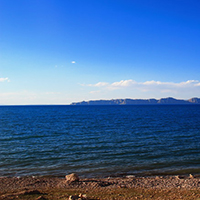Is there a common threshold to subfossil chironomid assemblages at 16 m water depth? Evidence from the Tibetan Plateau
16 m water depth – a chironomid depth threshold?

All claims expressed in this article are solely those of the authors and do not necessarily represent those of their affiliated organizations, or those of the publisher, the editors and the reviewers. Any product that may be evaluated in this article or claim that may be made by its manufacturer is not guaranteed or endorsed by the publisher.
Authors
Fluctuating lake levels are an important driver of ecosystem change, and changes in the precipitation/evaporation balance of a region can lead to undesirable changes in ecosystem functioning. Large-scale changes in hydrology will become increasingly more likely as a result of ongoing climate change in the coming century. This is especially true for the Tibetan Plateau, which plays a crucial role as the “Asian water tower” for the surrounding densely populated regions. Chironomids (Diptera: Chironomidae) have proven to be one of the most valuable bioindicators for monitoring and reconstructing the development of aquatic ecosystems. Besides temperature, water depth and salinity are two of the most important environmental factors affecting chironomids. To study the relationship between chironomids and water depth, we analyzed surface sediment samples of two large Tibetan lakes, Selin Co and Taro Co. These lakes have similar environmental conditions (e.g. elevation, temperature and oxygenation) but show strong differences in salinity (7–10 and 0.5 ppt, respectively). Our results show that the chironomid assemblages in both lakes have similar water depths at which the fauna abruptly changes in composition, despite different faunal assemblages. The most important boundaries were identified at 0.8 and 16 m water depth. While the uppermost meter, the “splash zone”, is characterized by distinctly different conditions, resulting from waves and changing water levels, the cause of the lower zone boundary remains enigmatic. Even though none of the measured water depth-related factors, such as water temperature, oxygen content, sediment properties, light intensity or macrophyte vegetation, show a distinct change at 16 m water depth, comparison to other records show that a similar change in the chironomid fauna occurs at 16 m water depth in large, deep lakes around the world. We propose that this boundary might be connected to water pressure influencing the living conditions of the larvae or the absolute distance to the surface that has to be covered for the chironomid larvae to hatch. We conclude that water depth either directly or indirectly exerts a strong control on the chironomid assemblages even under different salinities, resulting in distribution patterns that can be used to reconstruct past fluctuations in water depths.






